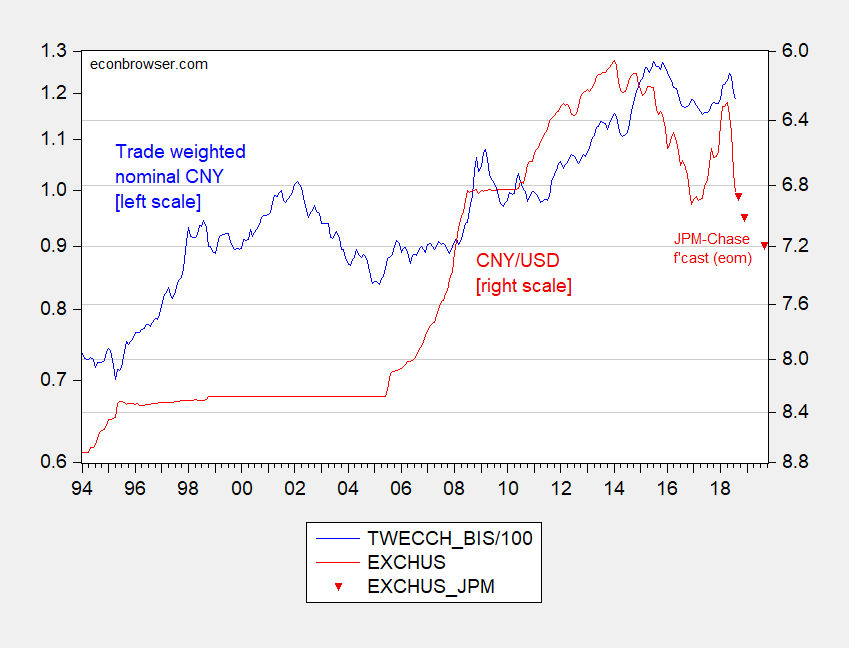JP Morgan Chase: “U.S.-China Endgame Involving 25 Percent U.S. Tariffs On All Chinese Goods In 2019”
That’s according to Bloomberg.
With little prospect of a restart for U.S.-China trade talks, JPMorgan Chase & Co. now expects an escalation in tensions that will see higher American tariffs on all Chinese imports, sending the yuan sliding to its weakest against the dollar in more than a decade.
“JPMorgan has adopted a new baseline that assumes a U.S.-China endgame involving 25 percent U.S. tariffs on all Chinese goods in 2019,” JPMorgan strategists including John Normand wrote in a note….
“Looser Chinese monetary policy ensures that the U.S. dollar will become an ever-higher yielder versus the renminbi for the rest of the cycle.”…
Here is a graphical depiction of the implied path of exchange rates:

Figure 1: Trade weighted nominal value of Chinese yuan, 2010=1 (blue, left log scale), bilateral CNY/USD exchange rate, monthly average, (red, inverted left log scale). September observation is 9/29, December 2018 and September 2019 observations are end-of-month forecasts from JP Morgan Chase. Source: BIS, FRED, Bloomberg.
Note that this predicted weakening does not necessarily mean the Chinese are “manipulating” their currency in the conventional sense, to the extent that loosening monetary policy via interest rate decreases naturally depreciates the exchange rate ceteris paribus. The question will be whether the Chinese actively intervene.
As the CNY against the US dollar drops, so too might other East Asian currencies. The evidence is mixed — see McCauley and Shu (2018) for a review of the literature.
In any case, we can expect the dollar to remain strong partly due to the schizophrenic macro policy mix in the US — expansionary fiscal policy at full employment combined with tightening monetary policy. See Michael Klein’s EconoFact discussion of the forces combining to drive down the CNY against the USD; particularly noteworthy is the point that given this US macropolicy mix and depreciated CNY, the US might not make much progress (if any at all) in shrinking either the reported (and economically irrelevant) US-China bilateral deficit, or the US total trade deficit.
Disclosure: None.



